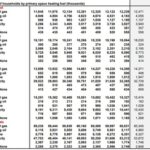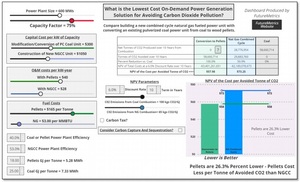A Good Time to Buy Heating Fuel (and More BBQ Pellets)
Energy Disrupter
ADVERTISEMENT
In the midst of a severe drought, I find myself dreaming of winter. Yes, even a Minnesota winter—bring on the cold and snow. We northerners aren’t cut out of the kind of heat we have experienced this year, and I think most would agree we’ve had enough (and it’s only early August).
Right now, pellet producers are hoping customers have started buying the heating fuel they will need this winter. As odd as it seems when it’s 90 degrees out, it benefits both the customer and manufacturer (and the retailers). As producers have reiterated time and again, it helps them better gauge demand, ensuring customers have the heating fuel they need, when they need it. Many of them have found their way into adding BBQ pellets to their product lines, and the interesting thing about BBQ pellets is that many consumers continue buy them year-round, rather than just the summer months. Speaking of cooking fuel, be sure to check out “Heating Fuel vs. Cooking Fuel” on page 10. In it, we discuss some of the logistics of making BBQ pellets, and the fact that, despite the perception that it might be an easy transition from fuel pellets, it is quite a bit different.
Moving on to the industrial side of things, I have heard many mentions about some supply chain issues in the domestic industry—i.e., steel shortages, lack of trucking, employees, etc.—so I looked in a bit on the export industry, mostly focusing on the Southeast U.S. (but also taking more of a high-level, global view of the market later on in the story). As for the U.S. Southeast, Oakridge National Laboratory conducted a study on the impacts of COVID-19 on the industry, and the results were a little surprising: they were quite minimal. Read “The Pandemic and Industrial Pellet Supply Chain” on page 16 to find out what the researchers’ reasons are for that relative resilience.
The bonus theme of this issue is lubrication and greases, a very critical but sometimes overlooked issue when it comes to editorial coverage. Well, we didn’t skimp on it this time. “Quality Grease: Critical at Pellet Mills” on page 20, and “Putting the Right Grease to Work for Your Mill,” on page 24, complement each other nicely, checking all the boxes when it comes to understanding the crucial role of grease and its characteristics, and how to determine what will work best in your facility.
Finally, it’s nearly time to begin updating our annual North American Fuel Pellet Production Map, so if there has been a change at your facility—capacity, ownership or operational status—please reach out to me at asimet@bbiinternational.com.
Author: Anna Simet
Editor
asimet@bbiinternational.com
















